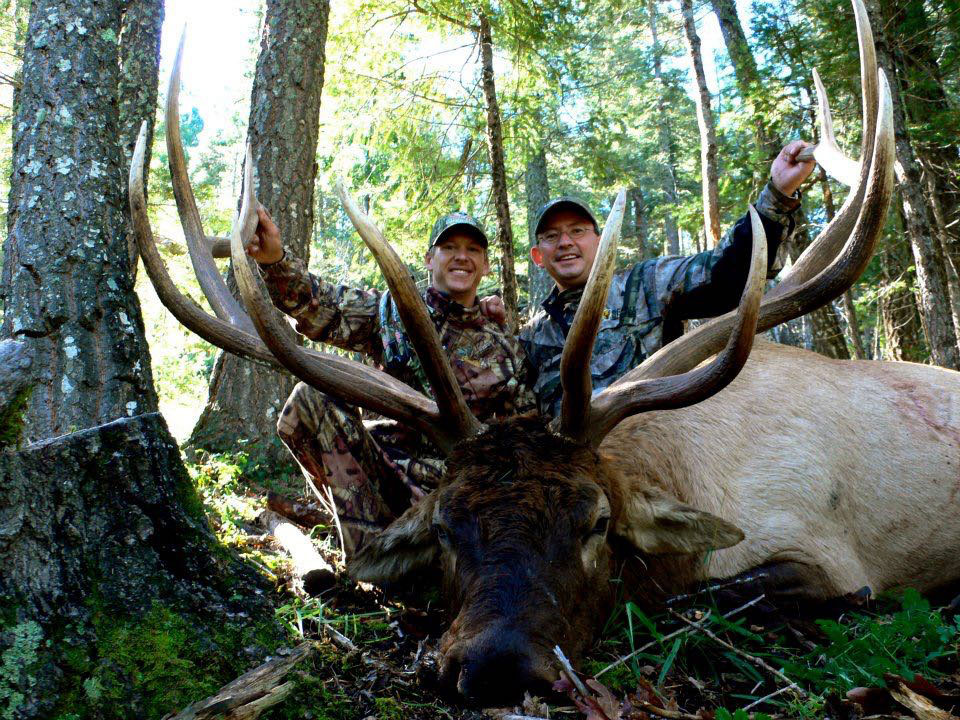For 30 years, Ralph Ramos of Las Cruces, New Mexico, has not only hunted elk for himself, he’s also guided for others. In an average season, Ramos will guide 8-10 other hunters to elk. “Out of 10 elk hunters, each hunter will have an opportunity to take an elk when he or she hunts with me,” Ramos said.
Ramos hunts only public lands. His favorite Mossy Oak pattern is Mountain Country. “I think this pattern has the best definition for the terrain where I’m hunting in the mountains, but it’s also versatile for hunting in open country, so critters won’t spot you either. I think Mountain Country looks cool, too.”
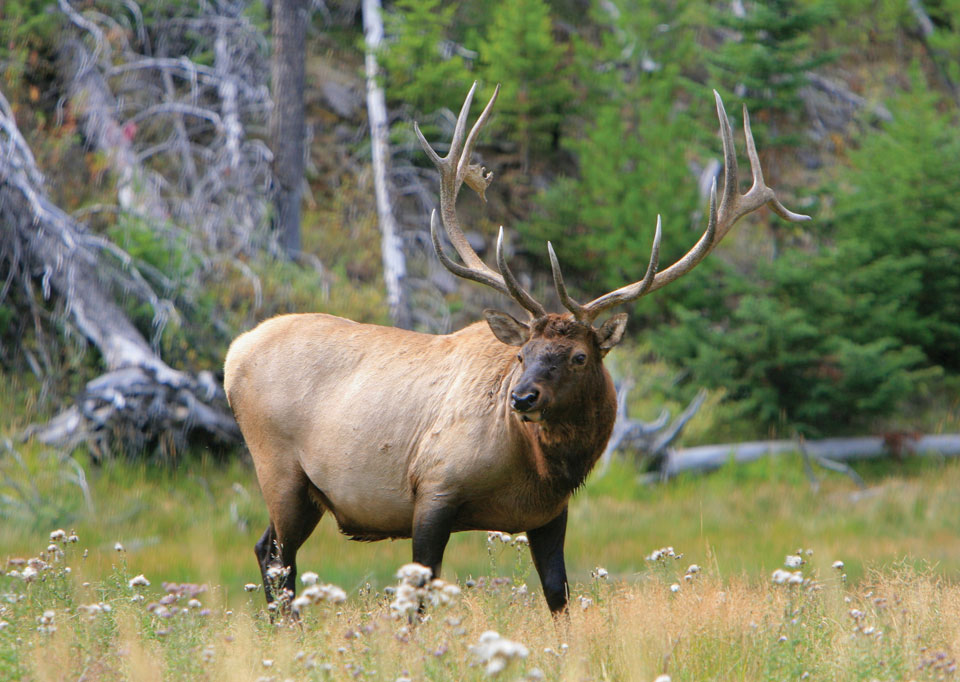
Start Out Softly Calling Elk and Learn the Other Sounds Elk Make Besides Bugling.
I think before anyone goes elk hunting, they need to know all the sounds that elk make, learn how to give those sounds and understand what those sounds mean. Elk are very vocal creatures, and I’m convinced you need to know what they’re saying with each sound they make to have success hunting them. Also, you need to learn how to use your calls to imitate what you’re trying to say to them. Often elk don’t make any sounds at all, and you must encourage them to make sounds to give up their locations by what you say to them.
On my first hunt on opening weekend of 2018, I realize the elk won’t be bugling at all. The bulls still will be in bachelor groups, and there may be some younger bulls that are hanging with some cows, trying to determine if they’re in estrus or not. First thing in the morning I like to start out giving very soft cow elk and calf elk sounds. I attempt to get close to where I think the elk are before daylight, and I’ll start calling right before legal shooting hours. I’m trying to use these cow and calf calls to see if I can get a bull to bugle. I don’t expect to hear a big bull bugle his brains out. I just want to see if I can hear a bull elk after giving those calls. Usually, if there’s a bull within 150 yards of where I’m cow and calf calling, that bull will speak to me in some way. He may give me a moan, a groan, a chuckle or perhaps a full bugle.
In the early season, I’ll most often hear a bull elk give a moan, a groan or a chuckle rather than a full-blown bugle. One misconception that new elk hunters often have is they think that if you bugle, a big bull will come bugling back to you and come charging in because that’s what they’ve seen on TV. That scenario may happen but rarely does. If you don’t know the other sounds a bull makes other than bugling, you may call in a bull and never realize he’s there.
Locating a bull is the most important aspect of elk hunting. If I can’t get a bull to make some kind of vocalization after I cow/calf call, then I’ll give a faint bugle – a non-aggressive bugle but rather a bugle that just lets the bull elk know, “Hey, I’m here.”
Hunt Elk Smarter Not Harder and Find the Elk Calls That Work for You.
I like to hunt elk smarter rather than harder. If I’m hunting a ridge that runs north to south, I’ll drop my ATV off at the southern end of the ridge. I’ll drive my truck to the northern end of the ridge. If that ridge is three miles long, I’ll climb up the ridge and start walking from the northern end toward the southern end, stopping about every 50 yards and giving a cow and a calf call, a faint bull call and then a more aggressive bugle. I’ll make those calls on the eastern side of the ridge, move 50 yards further, drop over to the western side of the ridge and give those very same calls. Let’s say that the ridge runs for three miles. If I locate a bull on either side of the ridge and am able to call him to me and take him, then I’ve got vehicles on either end of the ridge I can use to carry the meat out. If I’m really lucky, I’ll call in the bull when I’m closest to one of the vehicles. This way I have only a short distance to carry the meat and the head to either of my vehicles. That’s what I call hunting smarter, instead of harder.
I’m often asked whose elk calls I use. I’m neutral on elk calls, since so many good elk calls are on the market today that there’s a wide variety of very good ones. I use a number of different calls, including: Primos Calls, Native by Wayne Carlton, Rocky Mountain Calls, and Abe and Son Natural Elk Calls. All these calls sound like different elk, and I prefer a natural, nasally type of sound. Most elk calls right out of the package have a tinny, plastic type of echoey sound when you blow them. So, I stuff the insides of these calls with a small amount of soft foam to reduce that plastic, tinny sound.
All the elk call companies I’ve mentioned make the best mouth pieces to produce excellent mouth calls and bugles with a diaphragm. But I also use a diaphragm call and always take a large bugle and a small bugle with me when I’m elk hunting. Once I begin calling to elk, I sometimes want to sound like two different bulls arguing with each other. So, I’ll use a little bugle to sound like a smaller bull and a bigger bugle to sound like a larger bull elk. I don’t believe there’s one company that makes all the elk calls that are the very best. So, I prefer to take with me a wide variety of elk calls that all produce different sounds.
In selecting a call, you also must find a call that fits your mouth the best. Some people have small palates, and others have large palates in the roofs of their mouths. You must find a call that fits your mouth the best. Also some people have smaller lips with others having bigger lips. You must identify the elk call that makes the best sound, but to produce the best call with a diaphragm call, you must have one that seats comfortably in the roof of your mouth.
Is the Bull Elk a Lover or a Fighter?
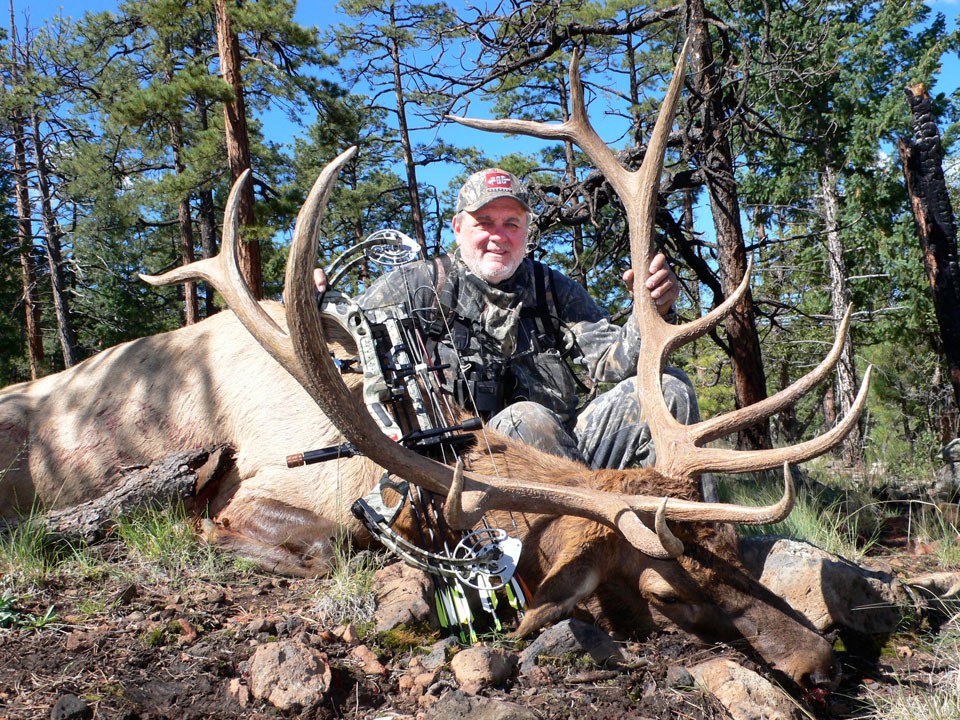
If I’m using cow calls and the bull answers my cow and calf calls, more than likely that bull is a lover. However, if I bugle and the bull bugles back, then maybe he’ll challenge me, and I’ll know he’s a fighter. You need to know whether a bull is a lover or a fighter, because then you’ll understand which calls to use to bring him to within bow or gun range. If he’s answering your cow calls and telling you he’s a lover, then keep giving him cow calls. On this bull, I’ll use a more extended cow-in-heat call. I’ll vary my calling between a cow-in-heat call and a calf call, every two to three minutes.
One of the mistakes I made in my early days of elk hunting was how I used my cow and calf calls. If an elk bugled, I’d give him my cow-in-heat call, and he’d bugle and start moving closer to me. I’d continue to give him those calls, and he’d keep on coming in to me. But then when I gave him a bugle, he’d get tight-lipped or would start bugling, moving away from me. Once you start an elk talking to you after you’ve given him cow calls, then continue to use your cow calls to call him in to where you are. You can change the tones you make with your cow calls and calf calls but keep giving those.
The same is true if you stimulate a bull elk to bugle to you after you’ve bugled to him. Then I’ll try to call him in with bugling. I may begin to introduce a second bugle tube after he’s answered the first bugle tube I’ve used. If I get that bull elk excited, I may use my Primos Bugle Call and my Abe and Son bugle call to sound like two bulls, close to each other, bugling. You can tell by how much an elk bugles how excited he is. You need to know the difference between when the bull bugles to you, or when he bugles and says, “I’m coming to you, and I’m going to whip you.”
If the bull isn’t super aggressive, I’ll use my bugle tube to produce groaning sounds, followed by a few chuckles. When I start the groan, I’m telling that bull that, “Yeah, I’m over here,” and when I start chuckling, I’m saying, “Bring it on! I’m ready to fight.” I never bugle and then chuckle afterwards, because that’s the sound that a satellite bull makes when he’s looking for another satellite bull. However, when you groan and then chuckle, you’re telling that bull that’s answering you, “Okay, I’m right here, waiting for you to show up, and we’re going to get it on.”
Once you hear a bull elk give a long bugle with a huff sound at its end, normally that’s a herd bull pushing cow elk. That bull is saying, “I don’t want to fight. Ladies keep moving away from there,” as he talks to his harem of cow elk.
When Calling Elk Sometimes You Need To Shut Up and Wait.
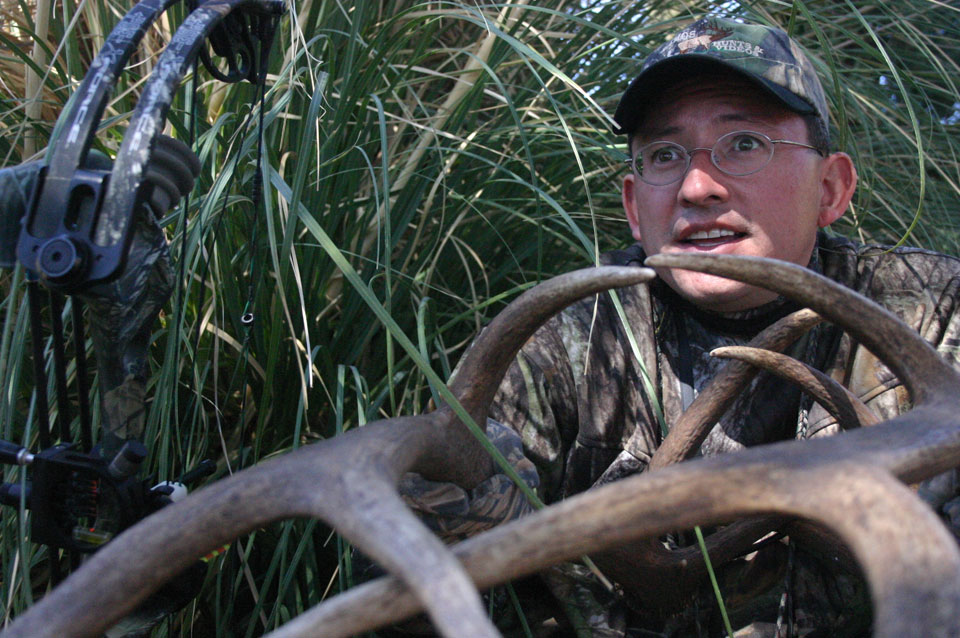
When I’ve got a bull coming to me and bugling, shutting up and waiting is very difficult. If I have an elk that’s bugling, and I bugle on top of his bugling (cut him off), and he bugles again, and I once more cut him off, and he bugles the third time, and I cut him off, then if I bugle, and he doesn’t bugle right back, but I’m waiting and waiting for him to bugle, then I may throw a few cow calls at him. Now, having said that, if I get that bull elk answering cow calls, and I continue to give cow calls, and he keeps on bugling at me, I’ll never bugle back at him.
The toughest elk to call in is a herd bull with cows. These bulls also are tight-lipped. They won’t bugle at you very often, but instead will moan and groan at you. Generally this happens when the herd bull has his cows bedded-up for a mid-morning nap. When the bull moans or groans, he’s telling his cows, “Don’t you ladies say a word. I’ve got you in a good place to take a nap, and you don’t need to say anything to that other bull.” Most hunters when they’re trying to get close enough to take a shot on a bull that’s bedding with his cows continuously will bugle at herd bull. As the hunter comes toward the bull elk, bugling, most of the time that herd bull will move his cows away from what he believes is an intruder bull.
Once I realize I’m close to a bull with bedding cows, and he starts moaning at me, I’ll begin moaning at him. I never like to get closer than 150 yards to a bull that’s bugling. I want to have a good setup in quality cover and have the wind right to keep that bull elk from smelling me. Most bowhunters want to have the wind exactly right for them when they’re hunting elk. They want the wind to be coming from straight behind the elk and straight toward them. But I like to have what I call my 50/50 rule. I want to have the wind 50% on the elk’s side and 50% on the hunter’s side – in other words, a crosswind. Then I like to set up so that my hunter has the correct wind when the elk comes in to try and get downwind of the caller and walks about 20 yards in the front of the hunter. The hunter is upwind of me where I’m calling, and we know the elk will try to come in downwind of the caller, which means the hunter should get a broadside shot at the bull elk, as he tries to circle downwind of the caller. My job as a caller is to pull that elk in front of the hunter where the elk can’t smell him, and my bowhunter can get a 20-yard or less shot.
Unhang a Hung-Up Bull Elk.
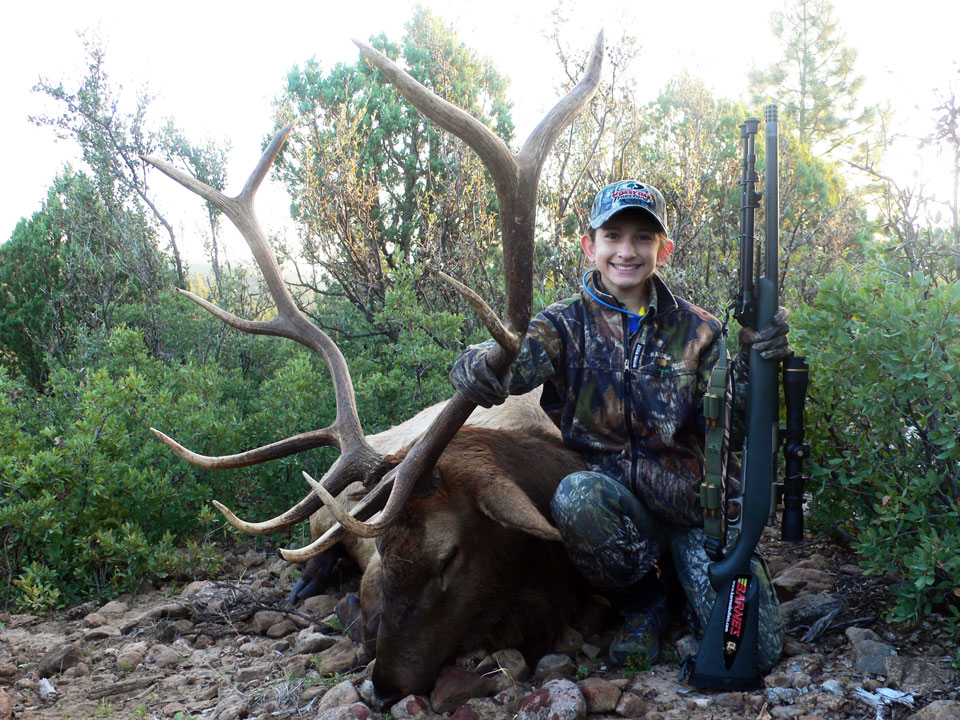
When we’re talking to a bull, and he’s coming to us, I like to have my hunter about 50 yards out in front of me. As the bull starts coming in, I begin backing away from the hunter. If a bull’s going to hang up, he’ll usually stop from 100-120 yards away from the caller. So, the bull will be 50-75 yards in front of the hunter. If I can back away from my hunter another 75 yards, that elk will walk right past my hunter. This time the bull elk may hang up about 20 yards from the shooter, a perfect distance for a bow shot.
As a caller, I back up if the bull hangs up. Then the bull knows that to get downwind of me he must keep moving toward me. If he stops and hangs up, he still will be within easy shooting range of an archer. The caller can suck in the bull by backing up and knowing that the elk is attempting to get behind him to smell what he believes to be another bull. The second time the bull elk hangs up, he should be exactly where he needs to be for the bowhunter to take a shot. Using these strategies, one of my hunters harvested a public land bull elk that scored 398 inches. We’ve taken several bulls using this tactic that will score in the 360s.
I’ve spent a number of years hunting the same units, and I’ve tried to locate all the water holes on those areas. In New Mexico, the elk must be where the water is. The other strategy I use is to find places well away from public roads. I realize that the average elk hunter doesn’t hunt much past a mile from a public road. I usually move in at least a mile from a public road before I start calling. I’m walking in while it’s dark to get past that first mile. From precious years of experience, I know how to get to where I want to go in the dark. However, I do carry a hand-held GPS receiver with me. I walk in as silently as possible and call about every 50 yards. But sometimes, I’ll cross over from one side of the mountain to the other side of the mountain. A bull may be coming to me silently, and when he spots me, he’ll blow out of the country.
Another strategy I use on bull elk is when I come up on an elk trail, see lots of droppings and smell strong elk urine, I’ll often set up my hunter, so he can see both sides of the trail. Then I’ll back off 20 yards from him and start calling. We may stay in that setup for about 30-40 minutes because the bull that’s heard us is 1/4 or 1/3-mile away and will be walking toward us. We already know that elk trail is a high-traffic area. Early in the season, the bull coming in may not make a sound. He’ll move to that area, knowing lots of elk travel there. I’ll use that type of place to start calling elk on opening weekend of 2018. I’ve already found a couple of places that fit this criteria – the trails smell like elk urine, there are plenty of droppings on them, and they’re well-used. I know elk can’t be far away. We’ve taken bull elk in places like this, year after year on Labor Day weekend.
I’m often asked if I take multiple bull elk off the same trail in the same year. Generally I won’t let my hunters take more than two mature bull elk off the same ridge the same year. I’ll usually only hunt one of the 10 areas like this that I’ve identified for one day during an elk hunt. If we don’t take a bull off that region during that day, then I’ll move to another area. If we’re on a four to five-day hunt, and we’ve worked a very nice bull that first day, I may come back to that same spot near the last day of the hunt and try again. But I never want to pound (call a lot) a region day after day.
Too, people want to know how I consistently find big bull elk. There are three secrets involved in this: the areas must be secluded and remote, I need to see a good number of cow elk there, and my hunter and I need to be well away from any type of road. I also search for places with good elk genetics, like the Gila National Forest in New Mexico. The Gila has a lot of hunting pressure, however, the country there is big, and getting away from the crowd isn’t hard.
For elk recipes and more, get John and Denise Phillips’ free cookbook, “Miz Denise’s Outdoor Cooking: More Than 35 Recipes for Elk and Mule Deer.”

